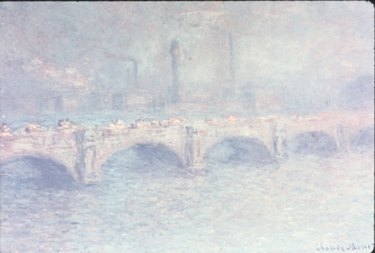
Romanticism was a period in the early 19th century that valued nature, imagination and emotion over rationality. Impressionism was an art movement that emphasized light and bright unmixed colors. Both styles are highly valued for their beauty, originality and innovation in the world of art and art history. Both styles captivated the imagination and altered the way people thought about art and ideals.
Time Period and Origin
Video of the Day
Both the Romanticism and Impressionist styles were around the same time and the same place. Romanticism appeared first, around the beginning of the 1800s in France and Britain. Impressionism gained popularity 70 years later in France.
Video of the Day
Romanticism Origins
Romanticism was a response to the then-reigning Enlightenment values of reason and order which followed the French Revolution. Enlightenment thinking held that science and reason could control nature and that man was the master of his fate. Romanticism took the opposite approach, stating that nature was unpredictable and uncontrollable. Man was often powerless against it, as shown in the recurrence of shipwreck imagery like Horace Vernet's "Stormy coast Scene After a Shipwreck."
Impressionism Origins
Like Romantisicm, Impressionism was a reaction to a set or style of thought. A select group of artists like Edgar Degas and Claude Monet were rejected from the annual painting exhibition in Paris known as the Salon. Rather than conforming their art to the accepted styles of the time, the artists opened their own exhibition and were as praised as often as they were criticized. The term "Impressionist" came from a critic by Louis Leroy that claimed Monet's work was a sketch or "impression" rather than a finished painting.
Themes
Both Romanticism and Impressionism commonly used nature as their subject. Théodore Gericault's "Evening: Landscape with an Aqueduct" and Camille Pissarro's "Côte des Grouettes, near Pontoise" both depict nature with an ethereal, dreamlike quality. The people in the paintings are less important subjects in the overall depiction of the landscape.